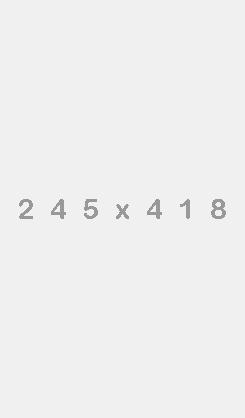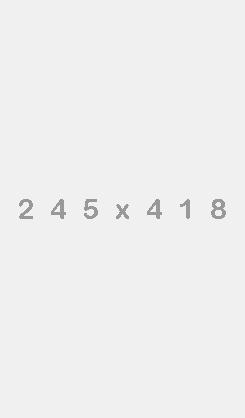I. The Four Cups
During the Pesach Seder, we drink four cups of wine, each with its own symbolic meaning. These four cups correspond to several interpretations:1
- The four leshonot geulah (vehotzeiti, vehitzalti, vegalti, velakachti) - These are the four Hebrew phrases from Shemot (6:6-7) that speak of Hashem’s promise to deliver the Jews from Egypt.
- Pharaoh's dream of the butler and the baker where Pharaoh dreams of four cups, which some interpretations connect to the four cups of the seder.
- The four cups symbolize the four exiles the Jewish people would face throughout history: Babylonian, Medo-Persian, Greek, and Roman.
- Another interpretation connects the four cups to the four future judgments on the nations of the world, followed by four cups of consolation for the Jewish people.
- There is also a connection between the four cups and the four letters of the divine name.
Each cup holds symbolic meaning, hinting at four different ideas. These can be seen as representing four aspects of the world's existence: This World, the Days of Moshiach and redemption, Tehiyat Hametim (resurrection of the dead), and Olam Haba (the World to Come).2 Alternatively, the four cups can symbolize the four elements that make up the world: Fire, Wind, Water, and Dust.3
a. The 5th Cup - Cup for Eliyahu Hanavi
There's no mention of this custom in the vast literature of the Geonim and Rishonim eras, nor is it included the Tur, or commentaries in the Shulchan Aruch, Rema and other early authorities4. In his work "Pesach Meuvin" (first published in 1692), Rabbi Chaim Benveniste (1603-1673) describes observing a custom among Ashkenazi Jews that left an empty glass in the center of the table to collect leftover wine from each cup. This glass was called the "Kos Shel Eliyahu" (Elijah's Cup), and Rabbi Benveniste was so impressed by the practice that he adopted it himself, even drinking the leftover wine during the meal. In 1728, Rabbi Moshe Chagiz (1671-1751) was asked about the Ashkenazi practice of pouring a cup of wine for Eliyahu the Prophet at the beginning of the seder, with the head of the household sleeping near this full glass afterward. Rabbi Moshe Chagiz addressed concerns about this being a form of divination (“nichush").
Furthermore, there's no mention in classic Jewish texts (Talmud or Midrash) of Eliyahu visiting the Seder table every year. The Mishnah Berurah (480:10) explains that "Kos Shel Eliyahu," alludes to our belief that Hashem will redeem us again, just as He did in Egypt, and send Eliyahu to announce it.
b. When To Pour?
One should not drink this cup of wine because one is not allowed to drink any cup of wine after the 4th cup. Rav Rafael Shamsiyev, in Bechori Yisrael,5 adds that Bucharian Jews traditionally pour the Kos Shel Eliyahu at the beginning of the Seder, along with the first cup of wine and placed on the table near the women’s seating area. This cup is used to pour wine for the fourth cup for all guests. Additionally, some have a custom to use the remaining wine in the Kos Shel Eliyahu for Kiddush in the morning.
IV. Haseba
On seder night, we must lean (haseba) to the left side while drinking the four cups of wine and eating matzah. According to some interpretations, haseba allows us to express atonement for any arrogance (gaava) we may have displayed throughout the year.6 But the larger purpose goes beyond that.
Haseba itself means "turning around" and “reclining.7 Furthermore, just as the Jews laid down under the cloud of glory like kings reclining on their beds, we too adopt a position of leisure.8 Traditionally, slaves would stand while eating, but free men dine while seated.9 By leaning during the Seder, we symbolically embody this newfound freedom we celebrate on this night - the night we became free from slavery in Egypt.10 The act of haseba reinforces the feeling of liberation that is central to the Pesach experience.11
Despite this, women in Ashkenazic lands did not practice reclining during the seder, relying on the opinion of the Rabiah, who wrote that in our times, reclining is unnecessary since even free people do not recline. On the contrary, sitting upright is considered a sign of freedom. This is also the view of the Taz and the Gra. Similarly, most women in Bucharian community did not recline. The author of Bechori Yisrael (Chapter 10, Halacha 2) suggests that this practice may be based on the interpretations of the Kessef Mishneh (Hilchot Chametz u’Matzah, 7:8) and the Pri Chadash (O.C 472:4), who explain that only an important woman, such as one who has maids to attend to her household needs, is required to recline.
According to this, if a woman does not have servants, she is not considered an "important woman" in terms of the obligation to recline. Nevertheless, the custom today is for women to lean in accordance with the Shulchan Aruch.
1 Abudarham (Seder Hagadah Uperusha), citing the Yerushalmi
2 Vilna Gaon (Pesach Hagadah pg. 46)
3 Haggadah of Rabbi David Hanagid (pg. 31)
4 The Cup for the Visitor: What lies behind the Kos Shel Eliyahu? By: Eliezer Brodt
5 Vol. 4 pg 79-80. See also the manuscript of Rabbi Chaim HaKohen Rabin (Ataret Zekeinim, p. 36)
6 Orchot Yosher ch. 11 of Rav Chaim Palagi cited in Pesach Betzion 14:1
7 Midrash Rabba (Beshalach 20:18). The Torah tells us Vayasev Elokim et Haam (Hashem turned the people around).
8 Midrash Tanchuma (Bamidbar 2)
9 Yerushalmi
10 Sheiltot Derav Hai Gaon (Tzav 77)
11 Perush Hamishnayot Pesachim 10:1
By Rabbi Nissan Shalomayev
Rav, Bukharian Jewish Cong. of Hillcrest, Kehilat Ohr V'Achdut
4 Or 5 Cups Of Wine At Pesach Seder?
Typography
- Smaller Small Medium Big Bigger
- Default Helvetica Segoe Georgia Times
- Reading Mode




